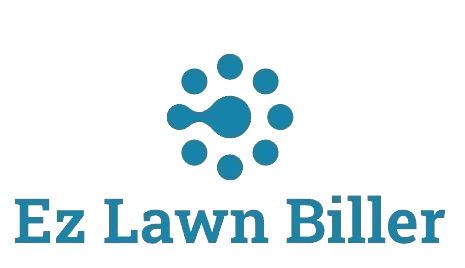Maximize efficiency and enhance customer satisfaction with optimized route management best practices for lawn care professionals.
Optimize Routes: Best Practices for Lawn Care Pros
In the competitive world of lawn care, efficiency isn’t just a buzzword; it’s a necessity. As a lawn care professional, understanding how to optimize routes can drastically enhance your service quality and client satisfaction. This blog post delves into the best practices for route optimization, helping you manage time effectively, reduce operational costs, and ultimately, boost your bottom line.
Understanding the Importance of Route Optimization
Efficient route optimization is vital for lawn care businesses. With tight schedules and the responsibility of servicing multiple clients, the way you plan your routes can make or break your day. When routes are optimized, your team can reach more clients with less fuel consumption and time spent on the road.
According to a study by the American Transportation Research Institute, poor routing can lead to a 20% increase in fuel costs. By enhancing your routing strategies, you can significantly reduce these expenses.
Additionally, optimizing your routes can elevate your company’s reputation. Clients appreciate timely service, and being able to arrive at their properties on schedule will enhance their overall experience.
Utilizing Technology for Route Planning
One of the most effective ways to optimize routes is through technology. Today’s lawn service software can help professionals streamline their scheduling and routing processes.
Using a lawn service app allows you to input client addresses and service times, enabling the software to calculate the most efficient path. For example, EZ Lawn Biller offers automated scheduling features that take into account real-time traffic data and seasonal constraints, ensuring that you can maximize your daily workload.
Additionally, consider using GPS tracking systems. Such systems can assist in monitoring your team’s progress throughout the day, providing you with data to refine your routing strategies continually.
Analyzing and Adapting Your Routes
Once you have established a routing strategy, it’s crucial to analyze its effectiveness. Collect data on your travel times, fuel consumption, and client feedback to identify areas for improvement.
For instance, if you notice that certain routes consistently take longer than expected, it may be beneficial to assess alternative paths or adjust your scheduling to avoid peak traffic times.
Moreover, as your client base grows or changes, so should your routes. Regularly revisit your routing strategy to adapt to new clients, service areas, and seasonality. A flexible approach ensures you maintain efficiency even as circumstances evolve.
Implementing Best Practices for Route Optimization
Here are some best practices to consider when optimizing your routes:
- Group Clients by Location: Organizing your schedule by geographical proximity can save travel time. This practice allows you to address nearby clients in one trip, reducing fuel costs and labor hours.
- Use Time Windows: When scheduling services, account for time windows when clients prefer service. Use this information to create a more accurate and efficient schedule that meets your clients’ needs.
- Prioritize Regular Clients: Consistency matters in the lawn care business. Regular clients should be prioritized to maintain their satisfaction, which can lead to long-term relationships and referrals.
- Monitor Traffic Patterns: Utilize real-time traffic information to avoid delays. Adjusting routes based on traffic can save time and keep your schedule intact.
By implementing these best practices, you can significantly enhance your operational efficiency.
Leveraging Customer Communication for Success
Effective communication with your clients plays a critical role in route optimization. Keeping them informed about service schedules and any changes can help manage expectations.
Consider sending notifications via text or email to confirm appointments and remind clients ahead of time. This proactive approach not only improves customer satisfaction but also helps you gauge if clients will be available for service, reducing wasted trips.
Moreover, feedback from customers can provide valuable insights into your service. Encourage clients to share their thoughts, and use this information to make adjustments to your routing and service offerings.
Investing in Training and Development for Your Team
While technology and software are essential, your staff’s training on route optimization is equally pivotal. Ensure your team understands the importance of efficient routing and is proficient in using the tools at their disposal.
Consider regular training sessions that focus on navigation skills, the use of technology, and customer service techniques. A well-trained team can enhance productivity, reduce delays, and improve overall service quality.
Investing in employee development not only benefits your operational efficiency but also boosts morale as staff feel more capable and valued.
Exploring Advanced Software Solutions
As your business grows, so do your routing needs. Advanced features in service company software can support complex scheduling and routing requirements.
For instance, an integrated lawn company computer program like EZ Lawn Biller comes equipped with advanced scheduling features that automate route planning based on service types, frequency, and geographical data. These tools can save you time and improve accuracy in your operations.
Additionally, scalable software solutions allow you to adapt your business as client numbers increase or geographic reach extends. Utilizing a lawn service computer program can streamline your processes, enabling you to focus more on service delivery rather than administrative tasks.
Case Studies: Successful Route Optimization in Lawn Care
Examining case studies can provide inspiration and insights into successful route optimization strategies used by lawn care businesses. For example, a local lawn care company in [City Name] implemented a GPS-based routing system that resulted in a 15% reduction in fuel expenses and a 20% increase in service efficiency.
They began by mapping out their current client locations and analyzing travel routes. Using real-time analytics, they adjusted their daily routes to maximize productivity, leading to impressive savings and enhanced customer satisfaction.
Similarly, a larger lawn service provider in [City Name] adopted the use of a lawn service app that allowed for instant communication between the office and field teams. This software’s capabilities made it easier to adjust schedules dynamically, ensuring that last-minute changes were seamlessly integrated into daily operations.
These examples showcase that with the right tools and strategies, lawn care professionals can achieve significant improvements in operational efficiency.
Conclusion
Optimizing routes is not just about cutting down travel time; it’s about enhancing overall service quality and increasing client satisfaction. By leveraging technology, analyzing your routes, implementing best practices, and investing in your team, you can transform your lawn care business.
Route optimization is an ongoing process that requires attention to detail and proactive management. As the lawn care industry continues to evolve, staying ahead of the curve can set you apart from the competition.
If you’re looking to simplify your billing processes while enhancing your operational efficiency, consider exploring Lawn Biller Software. By implementing such innovative solutions, you can focus on what truly matters: delivering exceptional lawn care services to your clients.




